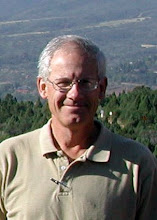Two years ago, in January 2008 I decided to listen to Failsafe's 4-day "Root Cause Experience" class attendees and change the name of Failsafe's pursuit from "Root Cause Analysis" to "Latent Cause Analysis."
Class attendees pointed out a fact about Failsafe's approach to "root cause analysis" which made the phrase counter-productive. Since Failsafe's methods do not identify "root causes," why use the phrase "root cause analysis?"
That's right -- Failsafe's approach to "root cause analysis" does not identify root cause! Instead, Failsafe's methods address the Physical, Human, and LATENT Causes.
Therefore, Failsafe Network, Inc. is now teaching, mentoring, and leading organizations towards doing Latent Cause Analysis.
Let me explain.
Think of anything that exists within nature -- mountains, oceans, trees, grass, bees, birds, even human beings. Scientists have done their best over the years to understand how all these things "came to be." They (scientists) attempt to understand the physical causes (reasons, factors) that explain our existance. In general, then, as humans we strive to understand the physical reasons for what we see. It seems innate within us that we yearn for this understanding.
Now shift your thoughts to things that we, as humans, create. Let's say we build a foot bridge over a creek. Just as with "nature," there is a physical explanation for the existance of the foot bridge. But since human beings put it there, there are also "human causes" (reasons, factors) that exist. After all, the foot bridge didn't simply appear (as did the mountains, oceans, grass, bees, etc.). Human beings put it there. It becomes their responsibilty.
Now let's introduce "things that go wrong." Let's say the footbridge collapses while someone is walking across. When something like this occurs, all that has been said remains true. We can initially strive to understand the physical causes (reasons, factors) of the collapsed foot bridge. But then, since the foot bridge was put there by human beings (and is therefore their responsibility), we also ought to understand the human causes (reasons, factors). We need to know "who did what wrong" (or, what were the points of inappropriate human intervention) that enabled the physics.
This is not to say that these human beings are "bad," or even that they knew they were doing something inappropriate. In fact, most of the time they didn't know. That's how we learn -- we go through life, doing the best we can each moment that presents itself until WHAM -- something goes wrong. Then, looking back at it (in retrospect, using 20/20 hindsight), we can see what we did (or didn't do) that enabled the physics.
But why do people do what they do? Why am I taking time to write this short article on this blog? Why did I get up this morning at 5:00 AM, when I was so comfortable under my bed covers? Why did I mess up my driveway when I plowed the snow off of it this winter?
If all we do is identify and act on the physical and human causes (reasons, factors) of our problems, then all we've done made sure the last incident will not happen again (the fallen footbridge, for example). And although there's nothing wrong with making sure the last incident will never happen, that's not enough. In fact, only going this far will cement you into a totally reactive existance -- just waiting for new (and more catastrophic) things to go wrong in your life.
Things go wrong in our lives to teach us something about ourselves. When we see the truth about ourselves, we change. When we change, our future (and the futures of those around us) will change -- for the better.
Therefore, the thrust of Failsafe's approach (Latent Cause Analysis) is to first understand the physics, and then understand the human interventions, but then to address the latent causes of the event.
I will write much more about latent causes in a future post. For now, let me give you the bottom-line Failsafe definition of a latent cause. The latent causes of an event are the answers to two questions:
1. What is it about the way WE ARE (as a family, business unit, organization, etc.) that contributed to this event?
2. What is it about the way I AM (as an individual) that contributed to this event?
When a person sincerely answers question #2 (above), it'll change their life. Things go wrong in our lives to teach us something about OURSELVES.
When people change, everything else changes.
Subscribe to:
Post Comments (Atom)

No comments:
Post a Comment